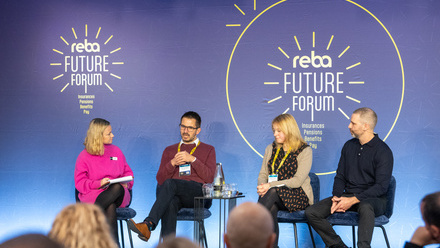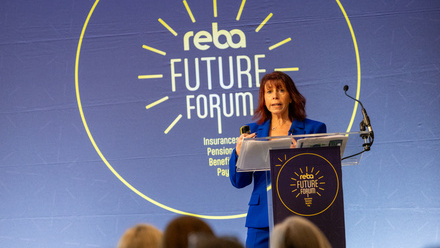Company culture, employee benefits and open communications – the recipe for a motivated workforce

The benefits of a motivated workforce
Motivation is an intangible factor that gives tangible results, such as:
- Productivity: a motivated workforce will want to do more than is expected of them. Motivated employees are self-driven to meet and exceed expectations.
- Quality: a motivated employee is more engaged and invested in the task at hand and does higher quality work.
- Reputation: word of mouth is a powerful tool. Motivated and happy employees help grow the reputation and value of the company.
- Attraction and retention of talent: a culture of motivation keeps the workforce happy. Happy employees are more likely to stay and grow within the company. A motivational culture will also attract top talent to the workforce.
- Less absenteeism: a motivated worker is less likely to take time off for frivolous reasons. So, absenteeism is also reduced.
- Positive company culture: every employee deals with people at work. When the workforce is happy, people have positive interactions with each other. The culture of positivity grows in all personal interactions within the company. This enhances a happy and positive work culture.
- Innovation: a happy and confident employee is more likely to take healthy risks and be innovative. Their sense of ownership encourages them to push boundaries and find better ways to do tasks and achieve goals.
Motivating the workforce
1. Precise goal setting
A company should be very clear in the goals set for both individuals and teams. It is easier for an employee to meet a goal when they know exactly what is expected of them. A company should set realistic goals that align with the company’s overall strategy. Bigger achievements can be broken down into smaller step by step goals. When you set goals that can be met and the employee succeeds at the goal, it results in motivation to meet more goals.
Meeting goals creates a waterfall effect of employee satisfaction and motivation. When the employee sees that each of their goals has helped the company grow strategically, they become more invested in supporting that growth. A company can also reward an individual or team that has put in a stellar performance or made a noteworthy achievement.
2. Positive company culture
Motivation is a drive that blossoms within the employee and cannot be forced. When a company provides positive reinforcement, they support greater employee self-esteem. A confident employee is more likely to take intelligent risks and work better. Their confidence in their competence gives them the courage to take on new challenges and bigger goals.
To grow employee self-esteem, a company culture of rewarding rather than punishing should be implemented. Punishing lack of performance may show results in the short term but demotivate the workforce in the long term. When there is a culture of rewarding better performances, the workforce will happily strive to do better. Confident employees are also better team members, and this creates a motivating environment in the company.
3. Employee Benefits: Recognise
Employee recognition calls out and heaps praise and rewards on employees who perform well. Employee recognition creates an emotional connection between the employee and the company. It not only supports the employee’s self-esteem but also strengthens the sense of belonging within the workforce.
4. Employee Benefits: Reward
Rewards are a tangible way to recognise and motivate employees. Rewards should improve the lives and experiences of the employee within and outside of the workplace. A reward that delights the employee reinforces a sense of loyalty to the company. You can reward individuals or teams within the organisation in different ways:
- Set occasions for rewarding: a company can specify occasions and milestones for rewarding. This can be on festivals, occasions or the joining anniversary of the employee. You can also reward employees when they reach a five-year or 10-year service anniversary.
- Appreciation or milestone rewards: reward individuals or teams when they achieve a noteworthy milestone or goal.
- Set performance rewards: a company can choose to reward their employees every quarter, half-yearly or annually based on performance.
- Timelines for rewarding: rewards can be given at any time of the employee lifecycle. You could give a newly onboarded employee a welcome gift and thank retiring employees with a retirement gift.
- Choose well: rewards are more motivational when they are more desirable. Offer choice such as e-commerce, retail, entertainment, hospitality, fashion, fitness, gadgets, books, etc. Sometimes, a simple cash card reward is more desirable to an employee. Rewards that offer trips and travel gift the employee with experiences that they will never forget. This strengthens the bond between the employee and the company.
5. Open communications
An employee who understands the ‘why’ of their tasks will be more motivated to perform. Clear communication about the reasons for goal setting and achieving the goal will benefit the whole company. Good communication gives the employee a feeling of ownership and helps them feel invested in the task’s success.
6. Empower
Giving employees greater autonomy in their work grows their self-confidence and performance. It demonstrates trust between the company and the employee. Employees can only perform as per their competency, skills and tools available. A company should provide the workforce with the tools that they require to perform well. It is also essential to support an employee who is trying to upskill. Upgrading an employee’s skills benefits both the employee and employer.
When the employer is supportive of the employee’s journey to upskilling, it reinforces the connection and bond between them. You can also incorporate rewards such as courses, seminars and books as part of the company’s reward strategy.
7. Challenge
The daily routine of work can sometimes dull the enthusiasm of the workforce. Set challenges for individuals and teams to get them excited. Novelty adds more meaning and eagerness to work and better motivates an employee. When the employee or team meets the challenge and earns recognition, it further bolsters their self-confidence and motivation.
A company culture of friendly competition within the workplace motivates teams to up their performance. When teams are rewarded as much as individuals it prevents selfishness on the part of an employee at the cost of their team.
8. Support career growth
Engage with employees and understand what their career path and goal is. A company should spell out the requirements for career growth and help employees chart out ways to grow. Open communication helps the employee envision a long career path within the company. It also motivates employees to set personal goals and achieve them. Assisting employees to learn and develop within the company motivates the employee and also encourages employee retention.
9. Be transparent
Transparency in goal setting, communication and reward helps employees clearly see where they stand. Using a solution such as Xoxoday Plum makes the rewarding process digital and easy to understand for the employer and employee. It also communicates the details of rewards and recognition to all the stakeholders.
10. Company culture of gratitude
Foster a culture of gratitude in the company. When there is a practice of thanking at all levels of management, everyone feels valued. A culture of gratitude results in emotions of comfort, happiness and calm. A workplace that is calm and happy is the best setting for productivity and job satisfaction.
It is challenging to measure motivation, but the positive results are clear to see. A company culture of recognition and motivation encourages employees to be happier at work, work better and stay with the company longer. Employee productivity boosts the company’s trajectory towards meeting its goals. A company that shows that they care and that implements positive reinforcement creates a highly motivated workforce.
This article is provided by Xoxoday.
Supplied by REBA Associate Member, Xoxoday
We offer business software products to solve problems around employee rewards&recognition.







